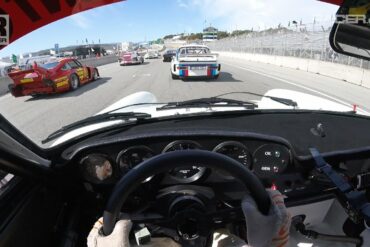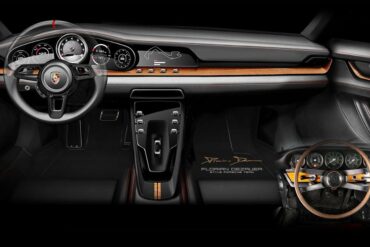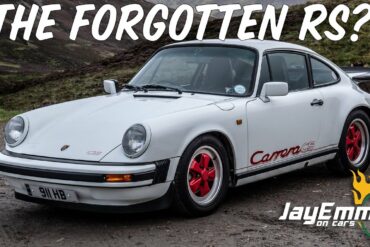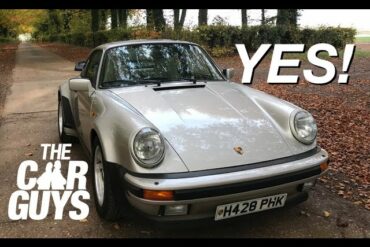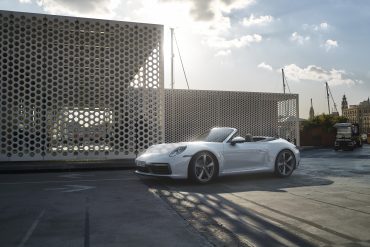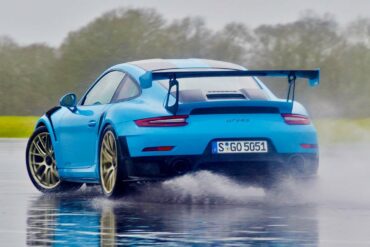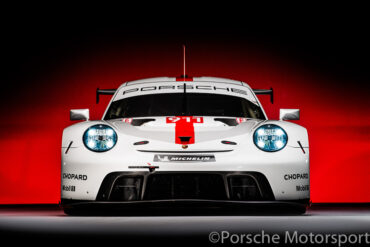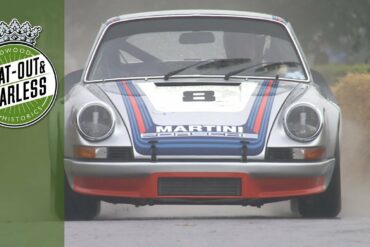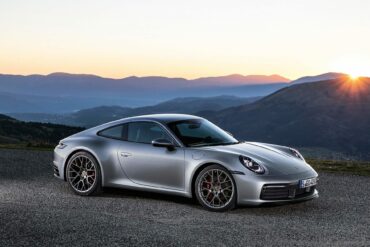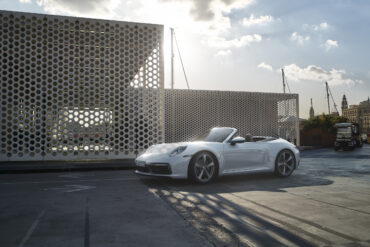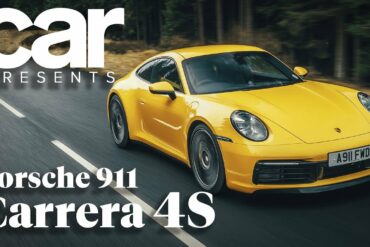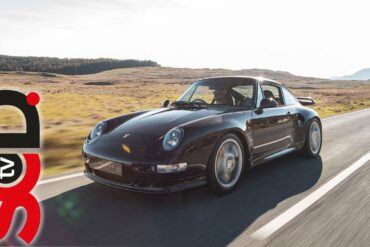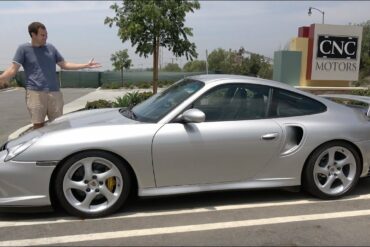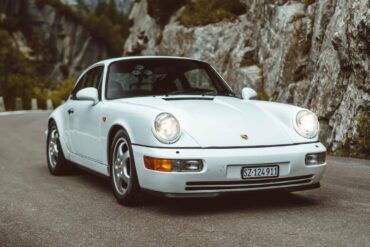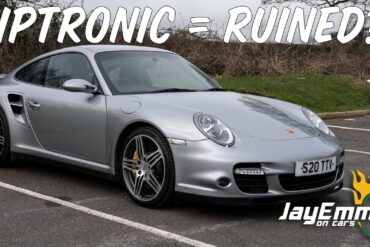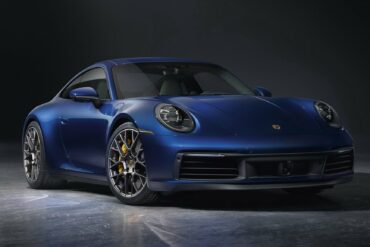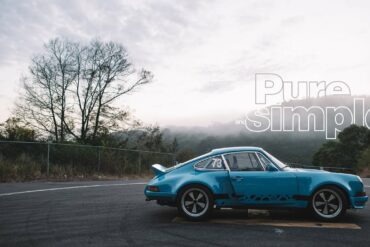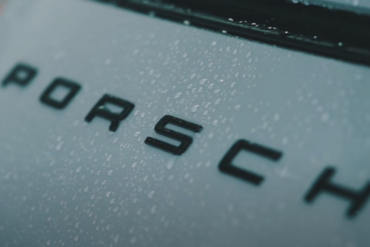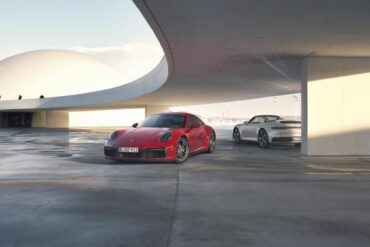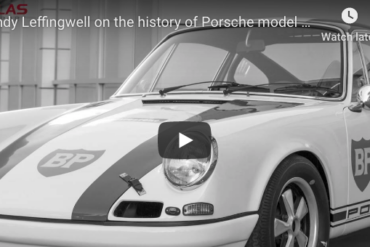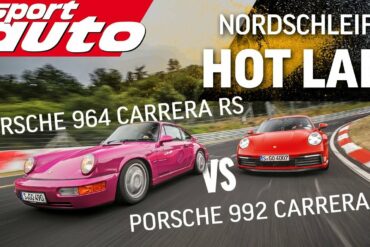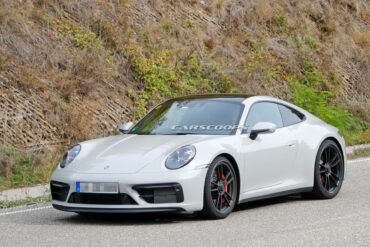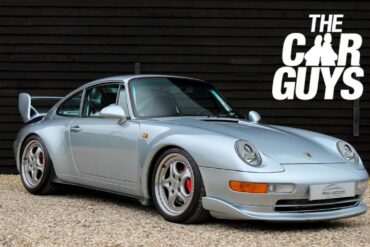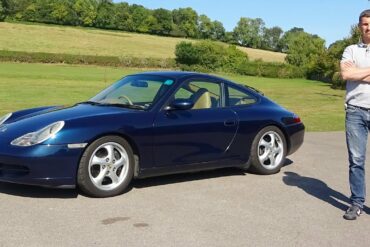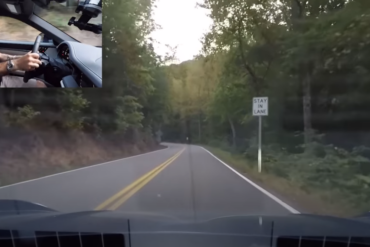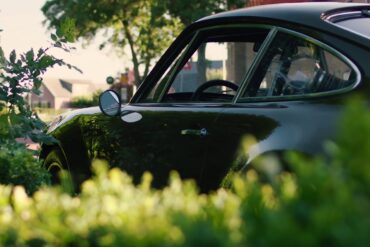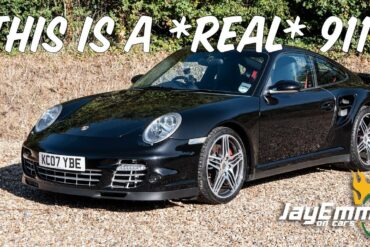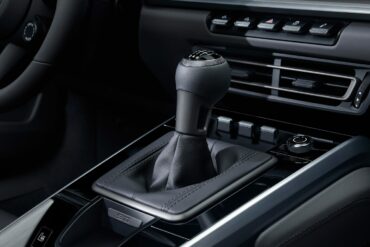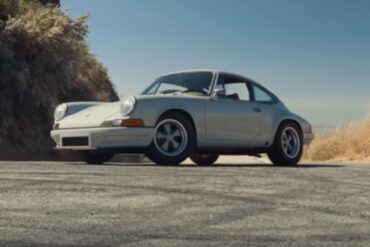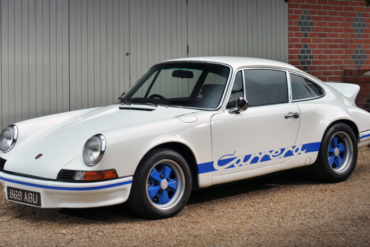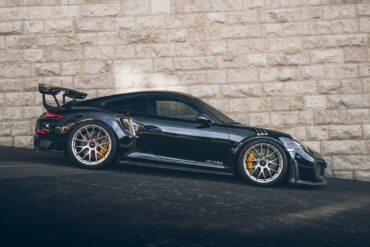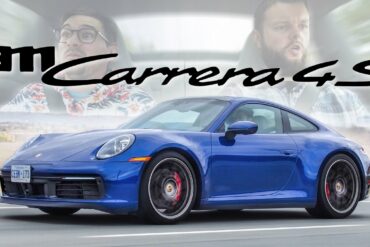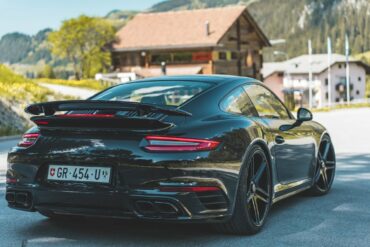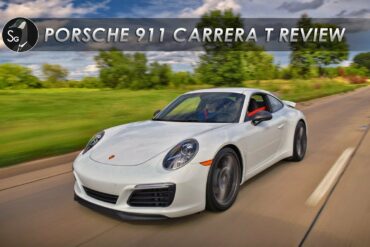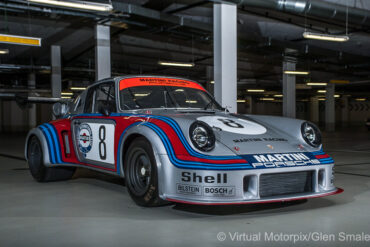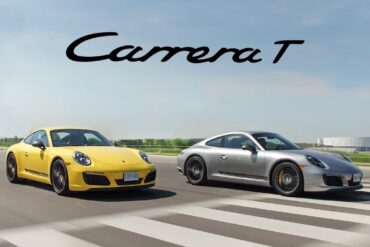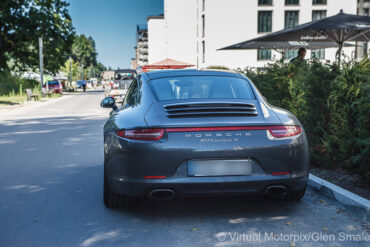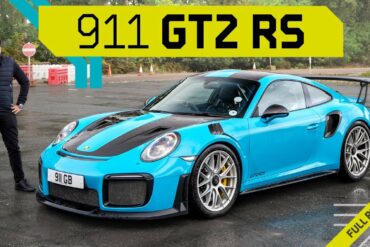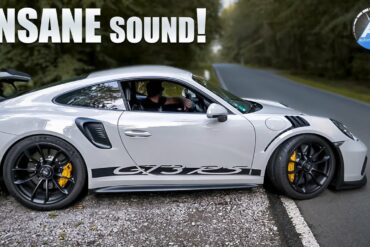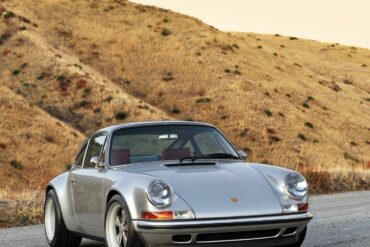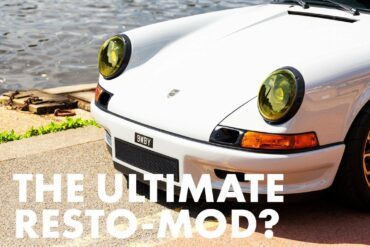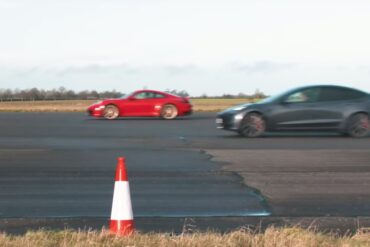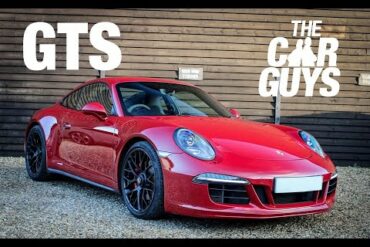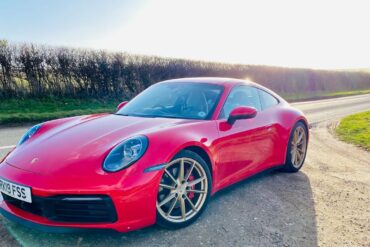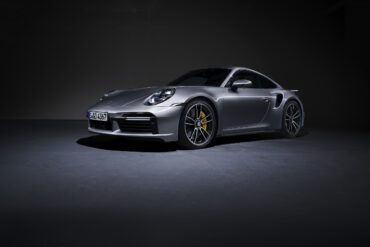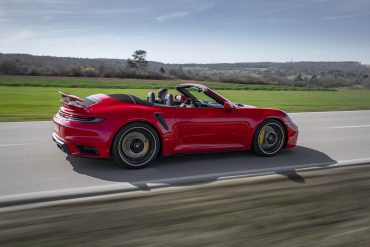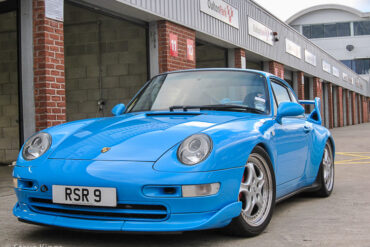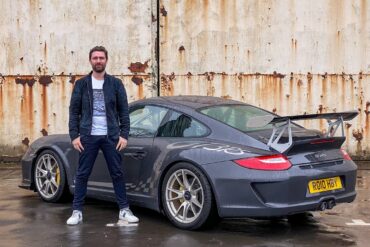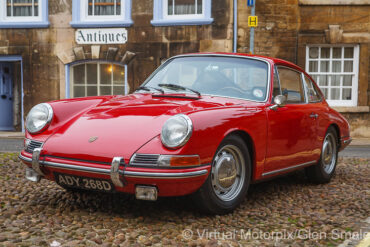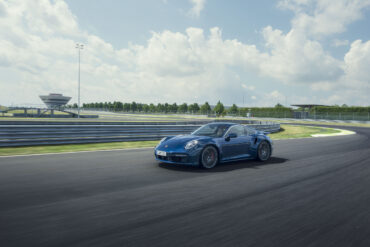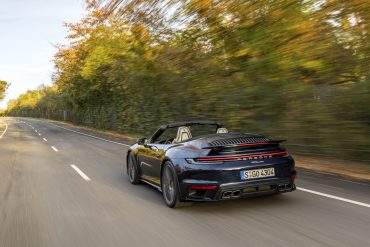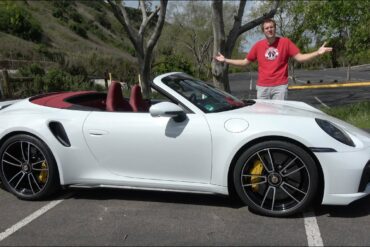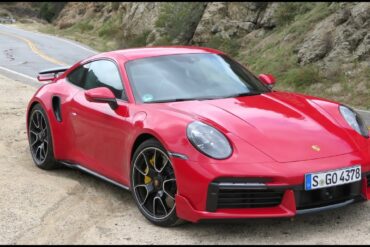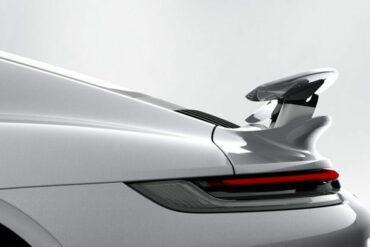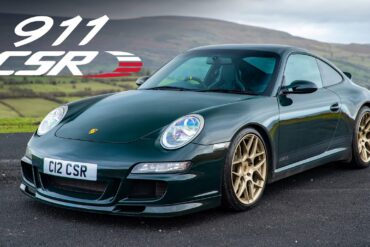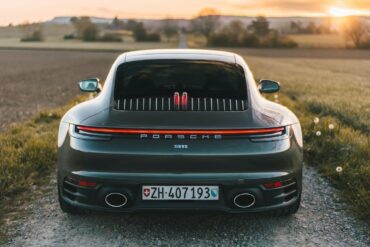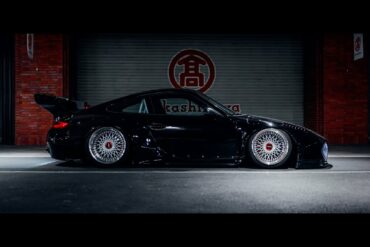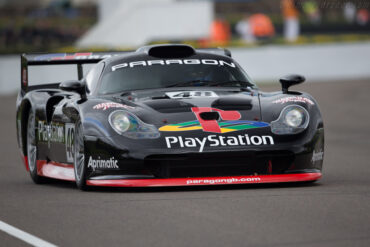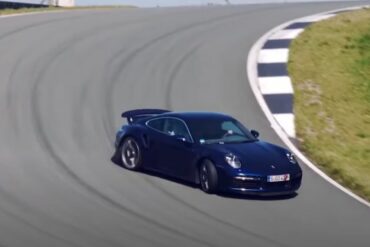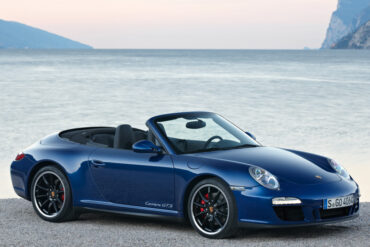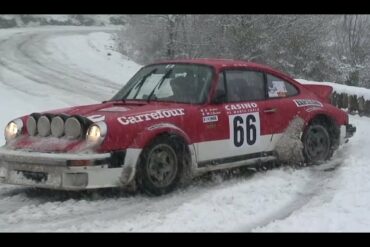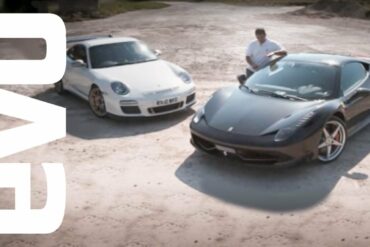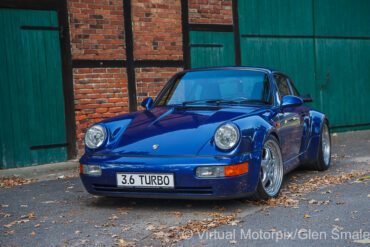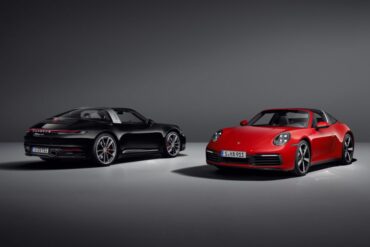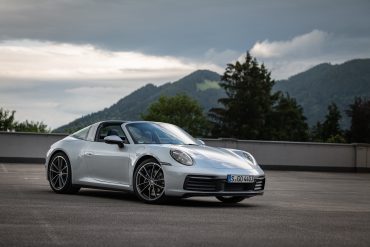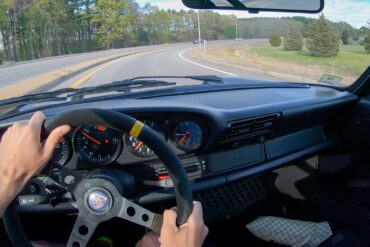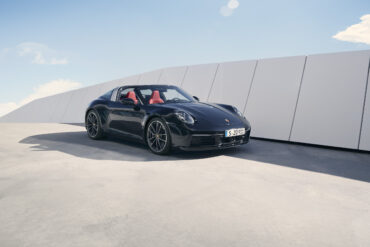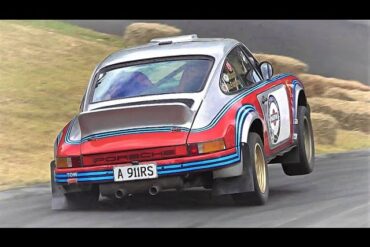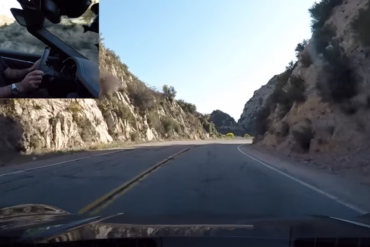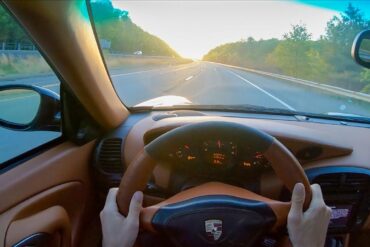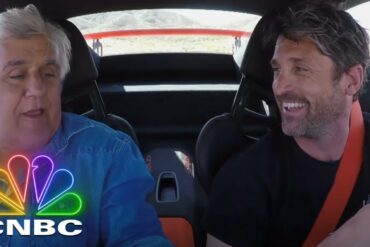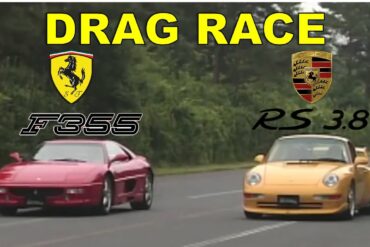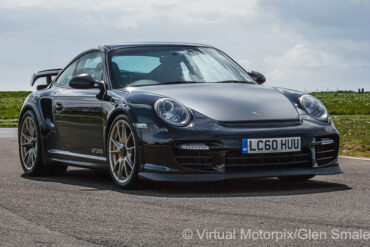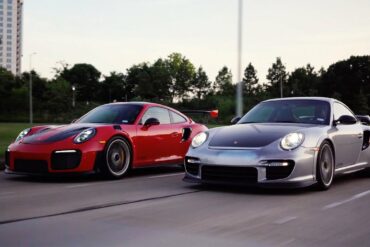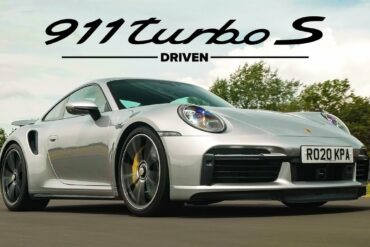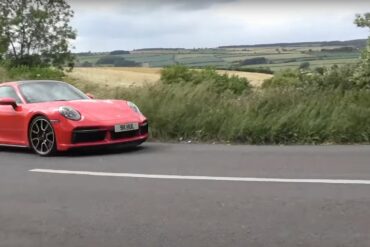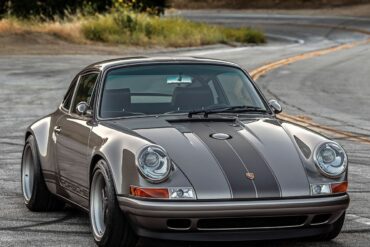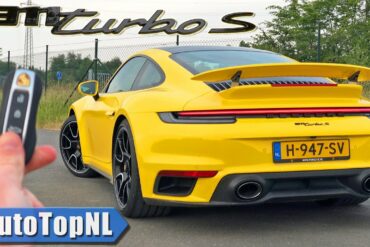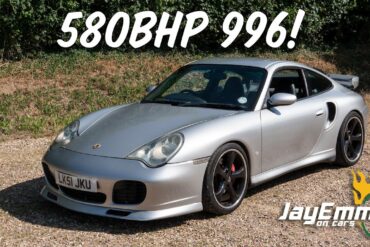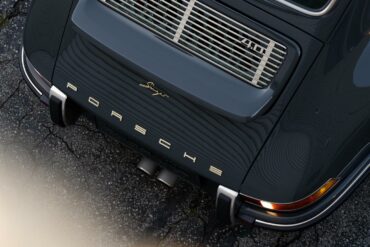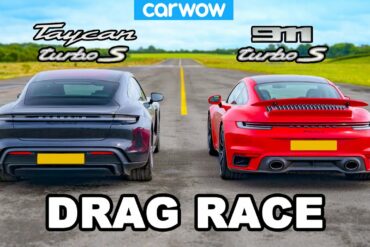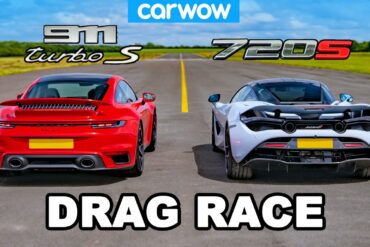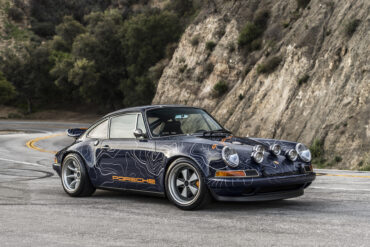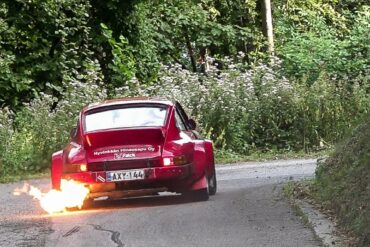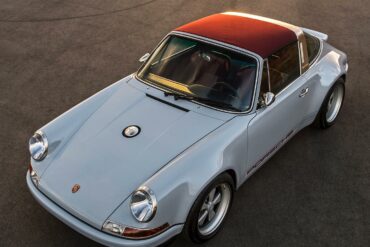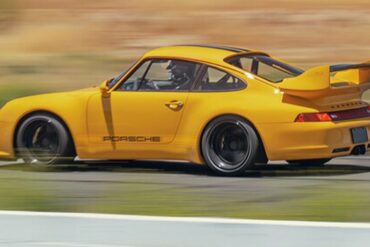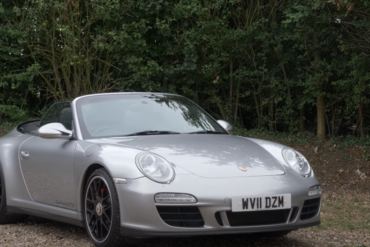Make no mistake that the Speedster is an absolutely fitting conclusion to the 991-generation. The Porsche 911 Speedster is an ingenious amalgamation of the latest technologies on offer, and the more simple ingredients that have been a principle of driving enjoyment since the invention of automobiles. A 502-horsepower engine, without turbochargers. A modern transmission, with just one clutch. A state-of-the-art suspension and chassis, with an unsullied purity. The list goes on. Perhaps the only drawback is that the Speedster’s rarity and price.
POV Drive In A Porsche 911 3.0 Carrera RSR Factory Porsche racer Patrick Long has a million-dollar historic 911 3.0...
Drawing Inspiration from the 1950s and 1980s Porsche Exclusive Manufaktur made an announcement that it will build some retro-inspired models based...
Is this the best driving classic 911? This is a great reviews of the 911 ClubSport. The 1987 Porsche 911...
Porsche 930 Turbo – One of the Greats Remember that episode where Damian mistakenly bought a broken Porsche 911 from...
The Carrera 4 is the base model 911, equipped with all-wheel drive. It starts at $109,850 for 2022, which is about $7,000 more than the standard rear-drive Carrera. Other than the additional all-wheel-drive system and the 150 odd pound increase in curb weight, the Carrera 4 is identical to its rear-drive sibling. It gets the same 379-hp, twin-turbo 3.0-liter flat-six engine. The twin-turbocharged 3.0-liter flat-six has 379 hp.
Porsche 991 GT3 RS on road and track Looks like a 911, drives like a hypercar? The Porsche 911 GT2...
The new Porsche 911 RSR (2019) What better way to introduce a new race car model, than to do so...
On Board Hot off the heels of the unveiling of the new Porsche 911 RSR, we’re looking back with the...
First Drive in the 992 Carrera 2S The KING of Sports cars!! The motoring icon, the Porsche 911! Let’s explore...
Get a Car Built for You Porsche cars are some of the most customizable from the factory that you can...
Features like Porsche’s active suspension and the new-for-992 “wet mode” are standard on the Carrera 4 variants, but the electronically controlled limited slip rear differential (standard on the 4S), as well as ceramic composite brakes (cast iron rotors are standard). The current 911 Carrera 4 Cabriolet is equipped with PASM (Porsche Active Suspension Management). The twin-turbo flat-six has 379 hp and 331 ft lbs of torque.
Porsche 911 Carrera 4S Video Review The Porsche 911 has always been an analogue sports car. Whereas Ferrari and others...
993 Turbo S – The Last Air Cooled Porsche Thanks to our friends at Lakeside Classics we get up close...
Doug Demuro Drives the 996 GT2 The 996 Porsche 911 GT2 is my favorite 911 — and today I’m going...
A great review in the mountains of Switzerland A great review in the mountains of Switzerland ...
Porsche 911 GT3 RS (997.2) Drive Through the Hills As the Porsche 911 GT3 dynasty turns 20 years old this...
Greatest Porsche GTs – The Ultimate Head to Head Porsche has been making GT cars for 20 years, and its...
Making More Power Than Claimed Toyota doesn’t appear to be the only company understating the power of its sports cars....
A Unique Tribute From its humble beginnings, this 1970 911 enjoyed a varied life, most notably as a rather tasty...
Your All-Season Sports Car is Here In an effort to expand its 911 lineup even further, Porsche added two all-wheel-drive...
We found this video of Randy Leffingwell giving a talk about the Porsche 911 on the Callas Rennsport Youtube channel,...
Nordschleife Hot Lap In A Porsche 964 RS vs. 992 Carrera S Porsche 911 Carrera RS (964), Porsche 911 Carrera...
Best Porsche 911? Porsche has plenty of variations of the 911, and the new 992 version of the car is...
This week Jason takes a trip down to Ashgood Classic and Sports Cars to test drive an iconic Porsche, the...
Porsche 911 996 in-depth review – Ultimate sports car bargain! Is the Porsche 911 996 the best value used sports...
Pushing the 4S Hard on Mountain Roads The 2020 Carrera 4S is the AWD variant of the all-new 992-generation of...
One Man’s Perfect 911 Short movie about my Porsche 1969 912 that was turned into my dream hot rod 911...
Doug DeMuro Reviews the 2020 911 Carrera S The 2020 Porsche 911 is the newest version of an icon. Today...
I’m a 911 fan, through and though – but my last experience of a turbo-powered Porsche was very disappointing. I...
Porsche 993 Cup 3.8 RSR On Track Video dedicated to a 1995 Porsche 993 Cup 3.8 RSR driven by Ralph...
Yes, the Stick Is Available The manual transmission of the 992-generation 911 from Porsche was already promised but now it...
Is This the Holy Grail of Porsches? If you didn’t know about Workshop 5001, then get ready to meet the...
Porsche 911 Carrera RS 2.7 1973 Porsche 911 Carrera RS 2.7 Engine: 2,687 cc, air-cooled horizontally flat six Production dates:...
My Friend Bought A Stealth Porsche GT2 RS Weissach!! In this weeks episode I take my friends new 991.2 GT2...
Porsche 996.1 v 996.2: Every Detail Revealed The Porsche 996 Carrera is on a crest of a wave in popularity...
2020 Porsche 911 Review Would you take it over the 991 911, Corvette C8, Nissan GTR, Audi R8? The guys...
Tuned 911 Turbo S On the Road I am a big fan of the Cars With Luke channel and in...
Porsche 911 Carrera T In Depth We review the last model year of the 991.2 Porsche 911 Carrera T. The...
The year 1974 will be remembered for many different reasons, depending on where you were living in the world at...
Reviewing The Purist Porsche We go for a drive in the 2018 Porsche 911 Carrera T Manual and PDK....
991.2 GT2 RS – Most Powerful 911 Driven Porsche‘s Most Powerful 911 ever!! The Legendary GT2 RS! When a 911 Turbo...
Porsche 991.2 GT3 RS – Turn Up the Volume Unbelievable once-in-a-lifetime DRIVE & SOUND with the recent 2018/2019 Porsche 991.2...
There is nothing better Bitten by the car bug at an early age, Shawn was drawn around the aura of...
Singer Vehicle Design – Mexico Commission Today, we take a closer look at the Singer Vehicle Designs Mexico Commission. At...
Paul Stephens 320 Clubsport Series II Review This is the Paul Stephens 320 Clubsport Series II and it is a...
Porsche Wins, Sometimes The car-buying website CarWow does cool little drag races on its YouTube channel. In this video, the...
The Porsche 911 GTS (991.1) Review Jason continues his quest to find the best modern Porsche 911 for all occasions....
Is the new 992 the best 911 of all? The 992 version of Porsche 911 was launched in 2019. The...
The current Turbo S comes with an all-new, 3.8 liter boxer six with two variable turbine geometry (VTG) turbochargers. The power output is a staggering 640 HP and 590 lbs-ft of torque. In keeping with previous Turbo models, the engine powers all four wheels. A new 8 speed automatic transmission with a manual mode manages the power, and can power the car to 60 MPH in a hair under a claimed 2.6 seconds. This is a staggeringly quick and capable car.
The 2022 Porsche 911 Turbo S Cabriolet is a formidable beast. The new Turbo S comes with an all-new, 3.8 liter boxer six with two variable turbine geometry (VTG) turbochargers. The power output is a staggering 640 hp and 590 lbs-ft of torque. In keeping with previous Turbo models, the engine powers all four wheels. A new 8 speed automatic transmission with a manual mode manages the power, and can power the car to 60 mph in a hair under a claimed 2.7 seconds.
Porsche 993 Carrera RS ‘RSR 9’ parked in the pit lane at the 10th RS Track Day Oulton Park, March...
Porsche 997.2 GT3 RS Video Review This is the Porsche 997.2 GT3 RS and we’re back for Season Two of...
It would be a disservice to call this new Turbo a "lesser" car than the Turbo S, but it does have less in most departments. Less power at 573 HP. Less features compared to the jam-packed Turbo S. Most importantly, less money required to put one in your garage. This also is not to say that the new Turbo isn't anything short of a monster. It will still go 0 to 60 in 2.8 seconds, will corner like it was on rails with Porsche Torque Management (PTM) all-wheel-drive.
All Porsche 911s are turbocharged these days but the Turbo model is something special. It gets the twin-turbo 3.7-liter flat six with tons of power and a huge $33,000 savings over the Turbo S. Thanks to an output of 573 hp, marking an increase of 32 hp over the predecessor, the new 911 Turbo Cabriolet accelerates from 0 to 60 mph in 2.8 seconds (0.2 seconds faster than before). The Turbo Cabriolet basically handles like a coupe.
In Depth Review of the 992 Turbo S The 2021 Porsche 911 Turbo S (992) is the ultimate 911 —...
Porsche’s 2021 Turbo S Video Review The all-new 2021 Porsche Turbo S is a tamed beast. It’s got 640 horsepower,...
Autoblog today published an in depth article investigating the new aerodynamic features of the upcoming 2021 Porsche 911 Turbo S. Not...
Henry Catchpole Reviews A Bespoke 911 CSR ...
Why I Loved The Porsche 992 Carrera 4S! My first drive in the brand new 992 Carrera 4S, what do...
A Special Widebody 997 Had the pleasure of shooting Mun’s crazy Old & New widebody and bagged 997. Special thanks...
There’s no doubt about it: the 911 GT1 EVO is still one of the best looking Porsches ever made and...
The Germans are a very interesting bunch. They are friendly, helpful, have good beer and great food. But they are also...
The GTS was powered by the same engine that was installed under the limited-edition Porsche 911 Sport Classic, but it was offered with more options. It wasn't just a driver's car, it was built for the passenger as well, with more options for comfort. From the outside, the Carrera GTS Cabriolet featured the same wide body as the Carrera 4 Cabriolet. At the front, the sport design apron featured a black lip-spoiler underneath. The Carrera GTS logo was painted on the doors. In the back, the car was fitted with LED taillights and four-round exhaust pipes. The 19” light-alloy wheels with central log-nut were fitted as standard.
Best of Porsche Rally Cars...
Chris Harris Drives The Ferrari 458 Italia & Porsche 911 GT3 RS Ferrari’s latest 562bhp V8 coupe has changed the...
Engine based on modified 3.6 litre 964 unit. Speedline wheels with big red brake calipers. Lessons learned in the Carrera Cup series proved the reliability of the new 3.6-litre engine. An additional three millimetres on the bore and two millimetres on the stroke, resulted in an increase in capacity of 300 cc. Combined with the turbo optimised cylinders, pistons and crank train, and an increase in the compression ratio from 7.0 to 7.5:1, this helped to boost power to 360 bhp. Torque was increased significantly to 520 Nm at 4200 rpm, up from 450 Nm at 4500 rpm in the earlier car.
This morning, as was teased last week, on Porsche’s own 9:11 Magazine online “TV” channel, the new Type 992 911...
While the base Targa isn't the most dynamic 911, it will suit a certain buyer well. If you want the sexiest looking 911 that is a great all-rounder and you don't plan on spanking it all the time, then this is a great 911 to buy. Even in lower-powered form, the 3.0-liter is a peach of an engine. Torquey across its rev range, it responds quickly to prods of the throttle. The real problem with the Targa is the added weight and the structure, which hurts it dynamically.
911 3.2 Carrera POV Run Onramps and Highway driving in my Aircooled 1988 Porsche 911 3.2 Carrera. Be sure to...
Like the standard 4S, the Targa 4S produces 443 bhp @ 6500 rpm from a six-cylinder, 3.0-litre boxer engine with twin turbochargers, and puts it to the road via an eight-speed PDK and Stuttgart's refined all-wheel-drive system. 390 ft lbs from as low as 2300 rpm also means you have tons of mid-range power on tap for any situation. Compared to the previous generation Targa 4S, the new model is up 23 hp and 22 ft lbs of torque.
Porsche 911 Turbo 996 Review We review the 2002 Porsche 911 Turbo 996 and discuss the good and bad of...
911 Owner Stories: Dan and his 993 Carrera 4S At a young age, Dan Brunn moved from Tel Aviv to...
Singer Vehicle Design – Westlake Commission Today, we take a closer look at the Singer Vehicle Designs Westlake Commission. The...
Now That’s What I Call Driving This is Stuart McFarlane´s beautiful Porsche 911 SC Safari, a 1974 machine built to...
Making The Case For Sticking With Manual We’ve covered three different versions of Porsche’s 992 so far: The Carrera S,...
POV Test Drive of Crazy Tuned 996 Turbo Wear headphones! The audio in this video was recorded with in-ear binaural...
Driving A Legend Patrick Dempsey and Jay Leno take a joy ride in a 1973 Porsche Carrera RS 2.7. With...
Porsche 911 997 Turbo PDK Review Today I’m driving Scott’s 911 997 Turbo. This car is equipped with the tiptonic...
Ferrari F355 vs Porsche 911 Carrera 993 RS 3.8 Drag Race From a Japanese car show in the 1990s, an...
2010 Porsche 911 GT2 RS (Type 997), Llandow Circuit, Cardiff, Wales, UK (2014) The GT2 has been Porsche’s top performing...
Porsche 997 GT2 RS versus 991 GT2 RS Porsche’s 991 GT2 RS remains the most powerful and fastest 911 ever...
Porsche 911 Turbo S – The Supermarket Supercar Henry Catchpole of Carfection calls the Porsche 911 Turbo S (992) the...
Porsche mania seems to be taking over at the moment, mostly because the 2020 Type 992 911 Turbo S has...
Singer Vehicle Design – Fredericksburg Commission Today, we take a closer look at the Singer Vehicle Designs Fredericksburg Commission. The...
Autobahn Run and Review of the 992 Turbo S We love the AutoTopNL POV videos and this one of the...
Better, Or Worse Than Standard? I love the looks of the 996 generation 911 turbo, but the drive of them...
Singer Vehicle Design – Stockholm Commission Today, we take a closer look at the Singer Vehicle Designs Stockholm Commission. It...
New Tech vs Old Tech Showdown It’s time for the Porsche showdown you’ve all been waiting for… Porsche 911 Turbo...
Epic McLaren vs Porsche Drag Race This is the one you’ve all been waiting for! 992 Porsche 911 Turbo S...
Singer Vehicle Design – Mulholland Commission Today, we take a closer look at the Singer Vehicle Designs Mulholland Commission. It...
Best of Porsche Rally Cars Check out this compilation i made for one of the most recognizable racing car in...
Singer Vehicle Design – Colorado Springs Commission Today, we take a closer look at the Singer Vehicle Designs Colorado Springs...
A Legend Remastered, Driven by Randy Pobst Randy Pobst gets behind the wheel of Gunther Werks’ Remastered 993 and dives...
2020 Porsche 911 Carrera S vs 2010 Porsche 911 Carrera S This is the new 2020 911 Carrera S, and...
Porsche 997 GTS Review Today, the 997 GTS is revered as one of the high water marks of the 911’s...


